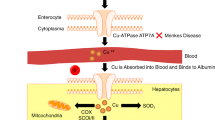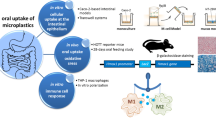Abstract
Omeprazole suppresses excessive secretion of gastric acid via irreversible inhibition of H+/K+-ATPase in the gastric parietal cells. Recent meta-analysis of data revealed an association between the use of proton pump inhibitors (PPIs) and increased risk of bone fractures, but the underlying molecular mechanism of PPI action remains unclear. In this study, we demonstrated that omeprazole directly influences bone metabolism using a unique in vitro bioassay system with teleost scales, as well as the in vivo model. The in vitro study showed that omeprazole significantly increased the activities of alkaline phosphatase and tartrate-resistant acid phosphatase after 6 h of incubation with this PPI. Expression of mRNAs for several osteoclastic markers was upregulated after 3-h incubation of fish scales with 10−7 M omeprazole. The in vivo experiments revealed that the plasma calcium levels significantly increased in the omeprazole-treated group. The results of in vitro and in vivo studies suggest that omeprazole affects bone cells by increasing bone resorption by upregulating expression of osteoclastic genes and promoting calcium release to the circulation. The suggested in vitro bioassay in fish scales is a practical model that can be used to study the effects of drugs on bone metabolism.




Similar content being viewed by others
Abbreviations
- AP:
-
alkaline phosphatase
- CTR:
-
calcitonin receptor
- CTSK:
-
cathepsin K
- DC-STAMP:
-
dendritic cell-specific transmembrane protein
- GAPDH:
-
glyceraldehyde 3-phosphate dehydrogenase
- MMP-9:
-
matrix metallopeptidase-9
- NFATc1:
-
nuclear factor of activated T cells cytoplasmic 1
- OPG:
-
osteoprotegerin
- PPI:
-
proton pump inhibitor
- RANKL:
-
receptor activator of nuclear factor-κB ligand
- TNF:
-
tumor necrosis factor
- TNFR:
-
tumor necrosis factor receptor
- TRAP:
-
tartrate-resistant acid phosphatase
- TRAF6:
-
TNF receptor-associated factor 6
References
Kinoshita, Y., Ishimura, N., and Ishihara, S. (2018) Advantages and disadvantages of long-term proton pump inhibitor use, J. Neurogastroenterol. Motil., 24, 182-196.
Tian, H., Xu, Y., Wang, J., Tian, W., Sun, J., et al. (2018) Effects of plasma albumin on the pharmacokinetics of esomeprazole in ICU patients, Biomed. Res. Int., 2018, 6374374, https://doi.org/10.1155/2018/6374374.
Yanagihara, G. R., de Paiva, A. G., Neto, M. P., Torres, L. H., Shimano, A. C., et al. (2015) Effects of long-term administration of omeprazole on bone mineral density and the mechanical properties of the bone, Rev. Bras. Ortop., 50, 232-238.
Thaler, H. W., Sterke, C. S., and Van Der Cammen, T. J. M. (2016) Association of proton pump inhibitor use with recurrent falls and risk of fractures in older women: a study of medication use in older fallers, J. Nutr. Health Aging, 20, 77-81.
Thong, B. K. S., Ima-Nirwana, S., and Chin, K. Y. (2019) Proton pump inhibitors and fracture risk: A review of current evidence and mechanisms involved, Int. J. Environ. Res. Public Health, 16, 1571.
FDA Drug Safety Communication (2011) Possible increased risk of fractures of the hip, wrist, and spine with the use of proton pump inhibitors, Update: 3/23/2011. Avilable at: https://www.fda.gov/drugs/postmarket-drug-safety-information-patients-and-providers/fda-drug-safety-communication-possible-increased-risk-fractures-hip-wrist-and-spine-use-proton-pump.
Andersen, T. L., Sondergaard, T. E., Skorzynska, K. E., Dagnaes-Hansen, F., Plesner, T. L., et al. (2009) A physical mechanism for coupling bone resorption and formation in adult human bone, Am. J. Pathol., 174, 239-247.
Florencio-Silva, R., Sasso, G. R., Sasso-Cerri, E., Simões, M. J., and Cerri, P. S. (2015) Biology of bone tissue: structure, function, and factors that influence bone cells, Biomed Res. Int., 2015, 421746, https://doi.org/10.1155/2015/421746.
Zohar, R. (2012) Signals between cells and matrix mediate bone regeneration, in: Bone Regeneration, Haim Tal, IntechOpen, https://doi.org/10.5772/38292.
Manolagas, S. C. (2000) Birth and death of bone cells: basic regulatory mechanisms and implications for the pathogenesis and treatment of osteoporosis, Endocr. Rev., 21, 115-137.
Suzuki, N., Suzuki, T., and Kurokawa, T. (2000) Suppression of osteoclastic activities by calcitonin in the scales of goldfish (freshwater teleost) and nibbler fish (seawater teleost), Peptides, 21, 115-124.
Thamamongood, T. A., Furuya, R., Fukuba, S., Nakamura, M., Suzuki, N., and Hattori, A. (2012) Expression of osteoblastic and osteoclastic genes during spontaneous regeneration and autotransplantation of goldfish scale: a new tool to study intramembranous bone regeneration, Bone, 50, 1240-1249.
Briganti, S. I., Naciu, A. M., Tabacco, G., Cesareo, R., Napoli, N., et al. (2021) Proton Pump Inhibitors and Fractures in Adults: A Critical Appraisal and Review of the Literature, Int. J. Endocrinol., https://doi.org/10.1155/2021/8902367.
Suzuki, N., Kitamura, K., Nemoto, T., Shimizu, N., Wada, S., et al. (2007) Effect of vibration on osteoblastic and osteoclastic activities: Analysis of bone metabolism using goldfish scale as a model for bone, Adv. Sp. Res., 40, 1711-1721.
Al Subaie, A., Emami, E., Tamimi, I., Laurenti, M., Eimar, H., et al (2016) Systemic administration of omeprazole interferes with bone healing and implant osseointegration: an in vivo study on rat tibiae, J. Clin. Periodontol., 43, 193-203.
Wang, L., Li, M., Cao, Y., Han, Z., Wang, X., et al. (2017) Proton pump inhibitors and the risk for fracture at specific sites: data mining of the FDA adverse event reporting system, Sci. Rep., 7, 5527.
Prause, M., Seeliger, C., Unger, M., van Griensven, M., and Haug, A. T. (2014) Pantoprazole increases cell viability and function of primary human osteoblasts in vitro, Injury, 45, 1156-1164.
Prause, M., Seeliger, C., Unger, M., Rosado Balmayor, E., van Griensven, M., and Haug, A. T. (2015) Pantoprazole decreases cell viability and function of human osteoclasts in vitro, Mediators Inflamm., 2015, 413097, https://doi.org/10.1155/2015/413097.
Shetty, S., Kapoor, N., Bondu, J. D., Thomas, N., and Paul, T. V. (2016) Bone turnover markers: Emerging tool in the management of osteoporosis, Ind. J. Endocrinol. Metab., 20, 846-852.
Costa-Rodrigues, J., Reis, S., Teixeira, S., Lopes, S., and Fernandes, M. H. (2013) Dose-dependent inhibitory effects of proton pump inhibitors on human osteoclastic and osteoblastic cell activity, FEBS J., 280, 5052-5064.
Hyun, J. J., Chun, H. J., Keum, B., Seo, Y. S., Kim, Y. S., et al. (2010) Effect of omeprazole on the expression of transcription factors in osteoclasts and osteoblasts, Int. J. Mol. Med., 26, 877-883.
Robling, A. G., Castillo, A. B., and Turner, C. H. (2006) Biomechanical and molecular regulation of bone remodeling, Annu. Rev. Biomed. Eng., 8, 455-498.
Price, C. T., Langford, J. R., and Liporace, F. A. (2012) Essential nutrients for bone health and a review of their availability in the average North American Diet, Open Orthop. J., 6, 143-149.
Minisola, S., Pepe, J., Piemonte, S., and Cipriani, C. (2015) The diagnosis and management of hypercalcaemia, BMJ, 350, h2723, https://doi.org/10.1136/bmj.h2723.
Ye, X., Liu, H., Wu, C., Qin, Y., Zang, J., et al. (2011) Proton pump inhibitors therapy and risk of hip fracture: a systematic review and meta-analysis, Eur. J. Gastroenterol. Hepatol., 23, 794-800.
O’Connell, M. B., Madden, D. M., Murray, A. M., Heaney, R. P., and Kerzner, L. J. (2005) Effects of proton pump inhibitors on calcium carbonate absorption in women: a randomized crossover trial, Am. J. Med., 118, 778-781.
Wu, X., Al-Abedalla, K., Abi-Nader, S., Daniel, N. G., Nicolau, B., and Tamimi, F. (2017) Proton pump inhibitors and the risk of osseointegrated dental implant failure: a cohort study, Clin. Implant. Dent. Relat. Res., 19, 222-232.
Goltzman, D., Mannstadt, M., and Marcocci, C. (2018) Physiology of the calcium-parathyroid hormone-vitamin D axis, Front. Horm. Res., 50, 1-13.
Moe, S. M. (2008) Disorders involving calcium, phosphorus, and magnesium, Primary Care, 35, 215-237.
Suzuki, N., Kitamura, K., and Hattori, A. (2016) Fish scale is a suitable model for analyzing determinants of skeletal fragility in type 2 diabetes, Endocrine, 54, 575-577.
Suzuki, N., Danks, J. A., Maruyama, Y., Ikegame, M., Sasayama, Y., et al. (2011) Parathyroid hormone 1 (1-34) acts on the scales and involves calcium metabolism in goldfish, Bone, 48, 1186-1193.
Romdhane, H., Ayadi, S., Elleuch, N., and Abdelghani, K. (2018) Effect of long-term proton pump inhibitors on bone mineral density, Tunis Med., 96, 193-197.
Corley, D. A., Kubo, A., Zhao, W., and Quesenberry, C. (2010) Proton pump inhibitors and histamine-2 receptor antagonists are associated with hip fractures among at-risk patients, Gastroenterology, 139, 93-101.
Nassar, Y., and Richter, S. (2018) Proton-pump inhibitor use and fracture risk: an updated systematic review and meta-analysis, J. Bone Metab., 25, 141-151.
Sims, N. A., and Martin, T. J. (2014) Coupling the activities of bone formation and resorption: a multitude of signals within the basic multicellular unit, Bonekey Rep., 3, 481.
Park, J. H., Lee, N. K., and Lee, S. Y. (2017) Current understanding of RANK signaling in osteoclast differentiation and maturation, Mol. Cells, 40, 706-713.
Lacey, D. L., Boyle, W. J., Simonet, W. S., Kostenuik, P. J., Dougall, W. C., et al. (2012) Bench to bedside: elucidation of the OPG-RANK-RANKL pathway and the development of denosumab, Nat. Rev. Drug Discov., 11, 401-419.
Liu, W., and Zhang, X. (2015) Receptor activator of nuclear factor-κB ligand (RANKL)/RANK/osteoprotegerin system in bone and other tissues (review), Mol. Med. Rep., 11, 3212-3218.
Walsh, M. C., Lee, J., and Choi, Y. (2015) Tumor necrosis factor receptor-associated factor 6 (TRAF6) regulation of development, function, and homeostasis of the immune system, Immunol. Rev., 266, 72-92.
Kobayashi, Y., Udagawa, N., and Takahashi, N. (2009) Action of RANKL and OPG for osteoclastogenesis, Crit. Rev. Eukaryot. Gene Expr., 19, 61-72.
Asagiri, M., and Takayanagi, H. (2007) The molecular understanding of osteoclast differentiation, Bone, 40, 251-264.
Takayanagi, H., Kim, S., Koga, T., Nishina, H., Isshiki, M.,et al. (2002) Induction and activation of the transcription factor NFATc1 (NFAT2) integrate RANKL signaling in terminal differentiation of osteoclasts, Dev. Cell, 3, 889-901.
Lee, J. U., Kim, L. K., and Choi, J. M. (2018) Revisiting the concept of targeting NFAT to control T cell immunity and autoimmune diseases, Front. Immunol., 9, 2747.
Hutchings, G., Moncrieff, L., Dompe, C., Janowicz, K., Sibiak, R., et al. (2020) Bone regeneration, reconstruction and use of osteogenic cells; from basic knowledge, animal models to clinical trials, J. Clin. Med., 9, 139, https://doi.org/10.3390/jcm9010139.
Podgorski, I., Linebaugh, B. E., Koblinski, J. E., Rudy, D. L., Herroon, M. K., et al. (2009) Bone marrow-derived cathepsin K cleaves SPARC in bone metastasis, Am. J. Pathol., 175, 1255-1269.
Chiu, Y. H., and Ritchlin, C. T. (2016) DC-STAMP: a key regulator in osteoclast differentiation, J. Cell Physiol., 231, 2402-2407.
Herroon, M. K., Rajagurubandara, E., Rudy, D. L., Chalasani, A., Hardaway, A. L., and Podgorski, I. (2013) Macrophage cathepsin K promotes prostate tumor progression in bone, Oncogene, 32, 1580-1593.
Acknowledgments
We are grateful to all staff members of the Noto Marine Laboratory, Division of Marine Environmental Studies, Institute of Nature and Environmental Technology, Kanazawa University, Noto-Cho, Ishikawa, Japan, for their endless support during the experimental study.
Author information
Authors and Affiliations
Corresponding author
Ethics declarations
The authors declare no conflict of interest. The experiment was performed in agreement with the guidelines for the care and use of laboratory animals of the Kanazawa University (Protocol No. 93255).
Electronic supplementary material
Rights and permissions
About this article
Cite this article
Zanaty, M.I., Abdel-Moneim, A., Kitani, Y. et al. Effect of Omeprazole on Osteoblasts and Osteoclasts in vivo and in the in vitro Model Using Fish Scales. Biochemistry Moscow 86, 1192–1200 (2021). https://doi.org/10.1134/S0006297921100035
Received:
Revised:
Accepted:
Published:
Issue Date:
DOI: https://doi.org/10.1134/S0006297921100035




